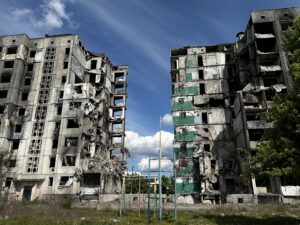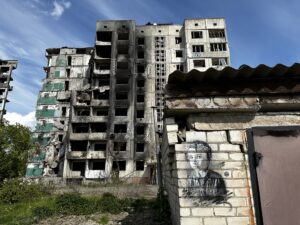
Building through destruction — Bucha and Irpin today
“Memory must never fade, but a city cannot look like a graveyard,” says Ruslan Savchuk, a member of the Irpin Reconstruction Summit, highlighting the so-called “car cemetery” on the way out of the town.
On the outskirts of Irpin, in Kyiv Oblast, rusty cars destroyed during the Russian occupation are piled up on the roadside. Some of them are pock-marked with bullets. They were abandoned by civilians fleeing Irpin, forced to continue on foot when they reached the bridge the Ukrainians had destroyed to stop the Russian advance.
With the local authorities’ permission, after the liberation of the city, American and Ukrainian artists decorated the cars, turning the photos into digital assets or NFTs (a ‘non-fungible token’ or NFT is a unique digital asset, it could be photos, videos, audio files, or another digital format), with the income from their sales used to support reconstruction projects. But some of the locals, including Ruslan, are unhappy with the idea of “embellishing the tragedy”.

What will happen to the car cemetery and many other reconstruction projects is a constant topic of discussion. Despite constant missile attacks and the repeated threat of destruction, Ukraine is not waiting for the end of the war to start its recovery. This approach is controversial – though best for those who have to continue living on the site of the tragedy.
Irpin suffered some of the worst destruction at the beginning of the war, when the Russian army’s advance towards the capital was stopped right in this town. Seventy per cent of Irpin’s infrastructure was damaged, and 16,358 residents were left homeless; 119 multistorey apartment blocks and 1,483 private houses, medical institutions, schools and gardens, water distribution systems, and municipal special vehicles were destroyed. The ‘Champion’city stadium was ruined.
A significant amount of money for restoration was collected by Ukrainian football legend and former AC Milan star Andrei Shevchenko – €150,000 at a charity event organised in Milan, while Milan and Ukrainian club Shakhtar Donetsk contributed a further €150,000 and €100,000 respectively.
In one year of reconstruction, support was provided to 412 people living in multistorey apartment blocks, and 322 residents of private houses, while a further 4,787 windows were replaced. Among the donors are various governments, twin towns, international foundations and ordinary citizens from Ukraine and abroad.
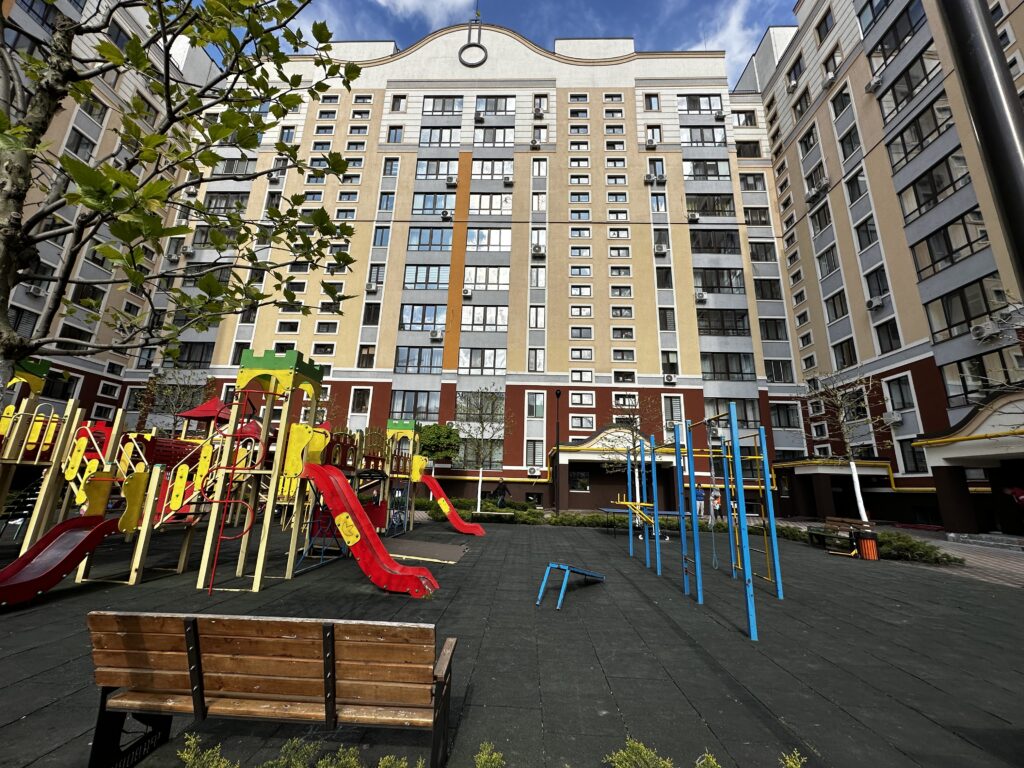
Photo: Nino Chichua/Netgazeti
UNICEF has allocated €4.8 million for the reconstruction of the Irpin Lyceum No. 3.
“But don’t imagine that we called UNICEF and said we needed €5 million for the reconstruction of the Lyceum, and we received the money the next day! There were lots of letters, meetings, negotiations, days and weeks of diligence by people,” says Volodymyr Karpliuk, the founder of the Irpin Reconstruction Foundation.
The Irpin Reconstruction Foundation is a non-governmental organisation that together with the city authorities does the calculations, restores damaged social and residential infrastructure, and attracts money from international foundations or charity. Together with the Investment Council, the Irpin Reconstruction Foundation has created the informational IRPIN HELP portal – a database of the destruction and reconstruction that took place in Irpin, and of the international partners involved in rebuilding. It is also possible to donate money via the portal.
One of the Foundation’s projects – the Irpin Reconstruction Summit – works on the design of the Freedom Square, museum and library buildings, Cultural Centre, and other tasks. In a city known before the war as the Ukrainian Parnassus, for its rich artistic heritage, the Cultural Centre is one of the most severely damaged buildings.
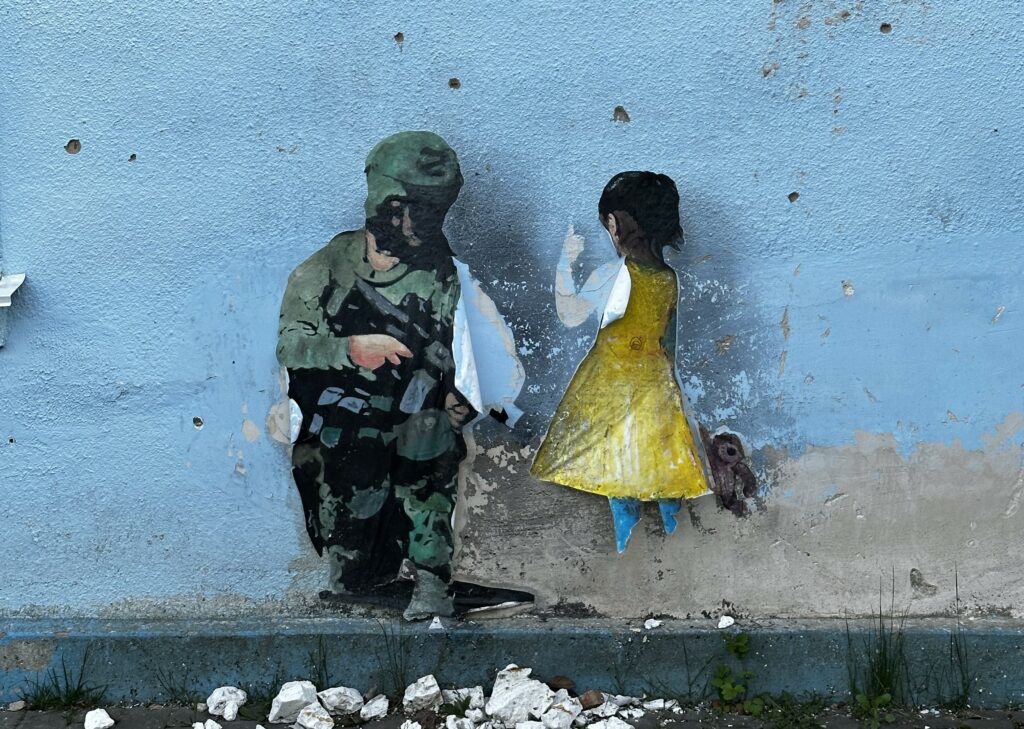
A year and three months from its liberation, Bucha has been virtually cleaned of its ruins. Bucha is a small town 30 km from Kyiv, and a symbol of the brutality of the Russian army.
Peaceful civilians with their hands bound were shot here. One of the first victims was a Russian citizen who asked the soldiers why they were coming to Ukraine. Subsequently, Ukrainians understood that the Russians had arranged everything in advance to occupy Bucha – they had hired the warehouse in the town to stock up with food before the war. For 33 days, the town suffered from terror, torture, rapes, robbery, and executions. The streets were covered with corpses. The mortuary was full, the cemetery located outside the town was under permanent bomb attack.
In the yard of the Andrew the Apostle Church, at the place of the mass burial, a bas relief of the Virgin Mary now stands. Citizens bring flowers and toys to this place and light candles.
Deep traces of the one-month occupation remain in the villages and settlements of Bucha district. “Help to restore our house”, “We want to live here”, “Expel Russia from the UN Security Council” are just some of the slogans daubed on the ruined buildings in Borodyanka.
The population of Bucha before the war was about 38,000 but only 5,000 people remained when Russian troops invaded the town. Now, 90% of the population has returned. On top of that, Bucha received about 8,000 refugees from the Eastern regions of Ukraine.
“Everything seems normal now,” says Vasily, 63, who left Bucha on 24 February 2022 and returned in late April. But it turns out the traces of war are easier to hide in buildings that in people’s memories:
Neonilla, 83: “People were losing consciousness at the sight of Russian soldiers. We didn’t dare to leave entrance hallways. We were terribly scared. They were shooting everywhere. Less during the day, but from 5.30 in the afternoon till midnight the shooting was intensive. They would shoot for 20 minutes, half an hour. Then they would rest for about the same time, recharge their guns and continue… Going out meant getting killed. The streets were lined with the corpses. The orcs would not even allow people to take them for burial . Our boys would collect them and bury them in the mass grave. There was a choirboy in our church, Andryusha. They killed him, his mother, father, two of their young neighbours, ran them down with the tank, threw them into the pit, covered it with twigs, lit a fire, and burnt them. Many locals were gone, especially children and women. It was right that they left and it’s good that other countries received them. We are old; we could not leave. We lived in such fear. We are in this condition because a person who is insane decided to start the war.”
Gennady Andreev, 86: “I was a schoolboy during the Second World War. We lived in Luhansk district occupied by the fascists. We were hiding in the cellar and one of the German soldiers gave us bread. I remember this well. Not all Germans were fascists. These [Russian soldiers] are the worst human beings. I lived for 86 years and have never seen such wildness and brutality. Putin exceeded all powers. This is a mockery of humankind.”
Vasily, 63: “No forgiveness, of course. Nobody could imagine this would be possible in Ukraine. Were we not considered brothers, Russians, Georgians…? The aggressor envies Ukraine. They do not want to live in a European manner. They still want that unwanted union. We went through the Soviet Union and do not need it anymore.”
Despite the undeniable evidence, exhumations, photo materials from satellites and taken by foreign journalists, and the number of the witnesses, Moscow still denies the perpetration of the war crimes. Russian Foreign Minister Sergei Lavrov said the horrible images from Bucha were staged.
“I suggest Lavrov to come and see with his own eyes what the Russian army left behind. I am sure he will have to pass Bucha on his way to The Hague,” said Anatolii Fedoruk, Mayor of Bucha.
According to Kyiv, 1,346 peaceful residents were killed in Bucha, among them 37 children. 9,000 war crimes were revealed.
* Nino Chichua travelled to Kyiv as part of a press trip for Georgian and Moldovan journalists, organised by EU NEIGHBOURS east in partnership with the international media NGO n-ost. The primary goal of the trip was fostering exchange and cross-border collaboration between journalists from Ukraine, the EU and the EaP countries, and to sustain the Ukrainian agenda and bring it back to the news feeds of leading EaP media.
Author: Nino Chichua
Article published in Georgian by Netgazeti.ge
MOST READ
SEE ALSO

‘The Kremlin has entered the chat’: how to protect your personal data on Telegram and avoid the bait of propaganda
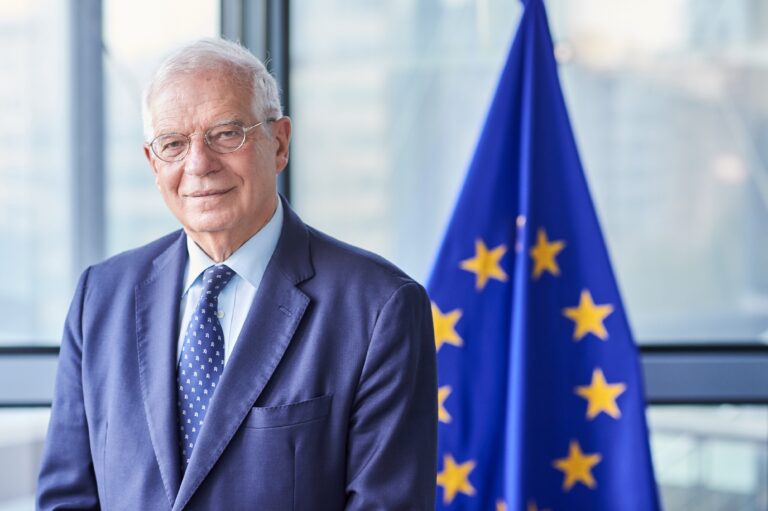
No, time is not on Russia‘s side

Socks for Peace: how the Vilni project is supporting internally displaced women in Ukraine
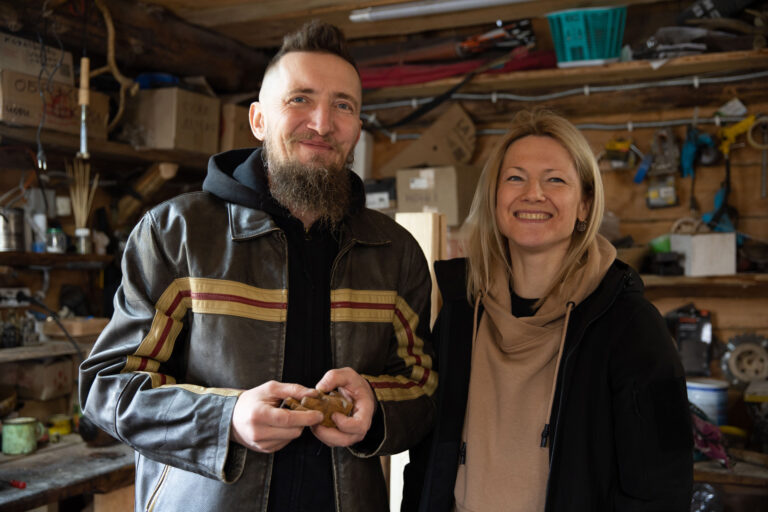
Celebrating traditional Ukrainian cultural identity in Rivne
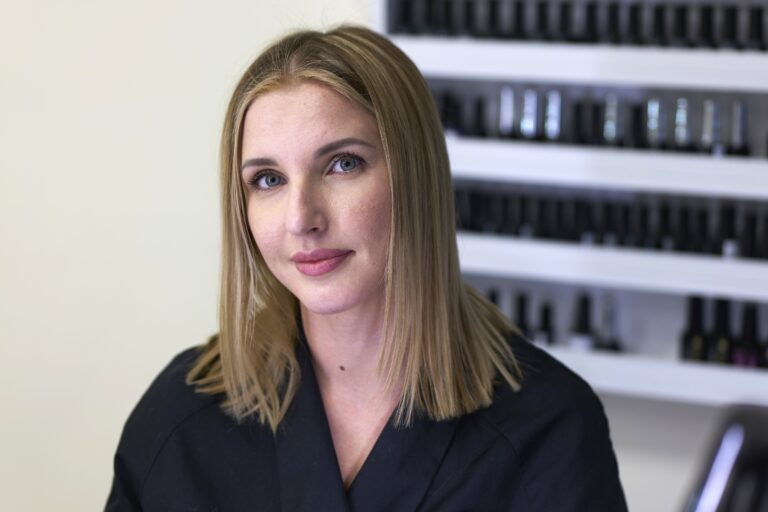
Natalia wanted her child to escape the war: how a single mother set up a successful business in Lithuania
More campaign pages:
Interested in the latest news and opportunities?
This website is managed by the EU-funded Regional Communication Programme for the Eastern Neighbourhood ('EU NEIGHBOURS east’), which complements and supports the communication of the Delegations of the European Union in the Eastern partner countries, and works under the guidance of the European Commission’s Directorate-General for Neighbourhood Policy and Enlargement Negotiations, and the European External Action Service. EU NEIGHBOURS east is implemented by a GOPA PACE-led consortium. It is part of the larger Neighbourhood Communication Programme (2020-2024) for the EU's Eastern and Southern Neighbourhood, which also includes 'EU NEIGHBOURS south’ project that runs the EU Neighbours portal.

The information on this site is subject to a Disclaimer and Protection of personal data. © European Union,


